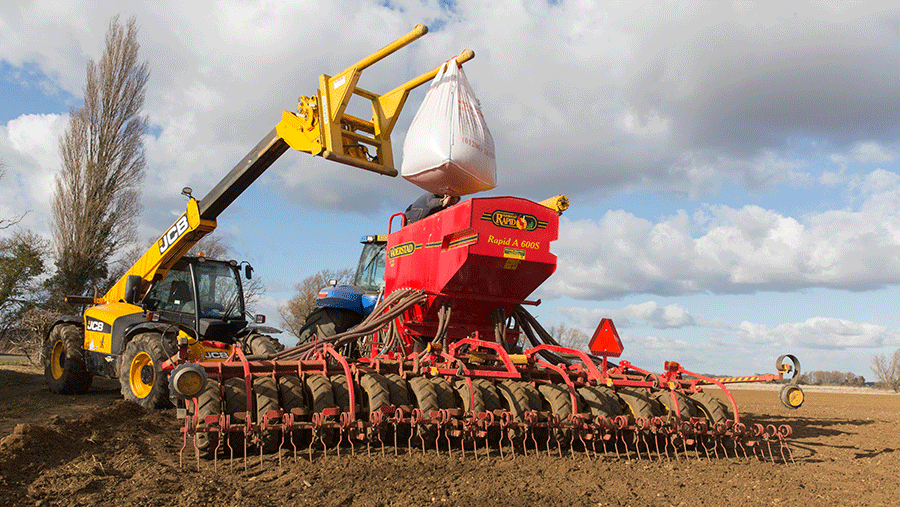Late spring barley drilling requires higher seed rates
 © Tim Scrivener
© Tim Scrivener Spring barley growers should increase seed rates if drilling is delayed by wet weather in order to increase tiller counts and maximise yield potential.
Those using the spring-sown crop as part of blackgrass control should also be looking to drive up numbers to make plant populations more competitive to choke out the troublesome grassweed.
While 350 seeds/sq m is an acceptable benchmark for planting into a well consolidated seed-bed, increasing rates by up to 20% will help to offset trouble brought on by delayed drilling, or in poorer conditions, says Ron Granger, arable technical manager with plant breeder Limagrain.
See also: Crop Watch: Wet weather leads to spring task slowdown
“A lower tillering variety such as Concerto will achieve very high yields if this target figure is met. However, do consider a higher seed rate or additional nitrogen inputs if plant counts are low,” he says.
Hitting the AHDB optimum of 775 tillers/sq m is crucial to keeping yield potential close to the maximum, he says. Trial work and crop walking on farms has shown him that many growers have not achieved these targets in recent seasons.
However, he acknowledges that crops with higher plant populations and high tiller counts will need more looking after, because it does increase the risk of lodging and brackling.
Stress reliever
Higher yields in modern varieties, such as Octavia and Sienna, have been driven by their higher tiller counts than older rivals, says Mr Granger.
This increases their capacity to compensate when plant numbers are low after a period of stress such as drought, he explains, and their ability to compete with blackgrass.
For this reason, growers should consider applying less nitrogen in the seed-bed and keep some back to help promote tillering in case of a later period of crop stress.

